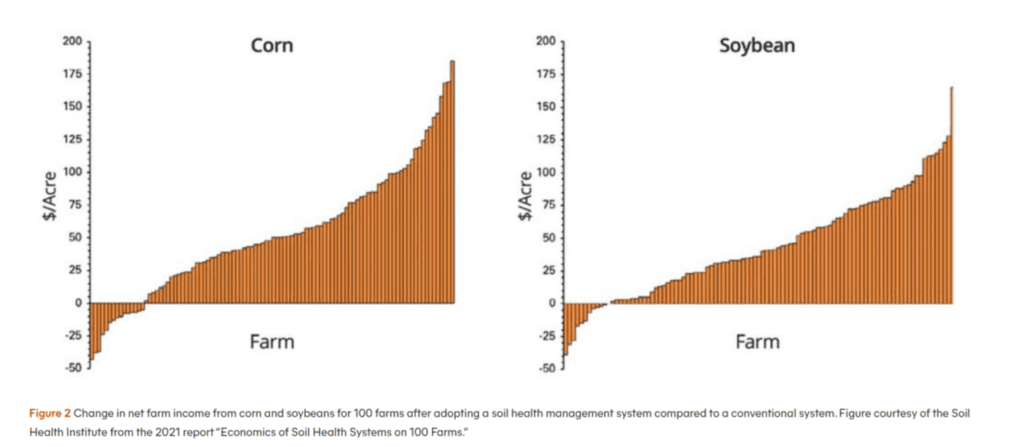How Conservation Practices Influence Agricultural Economic Returns
AGree has sought to better understand the financial benefits of agricultural conservation practices and support the farm finance community in thinking through the implications for their lending practices. This report, authored by Rob Myers, Director of the Center for Regenerative Agriculture at the University of Missouri, highlights a growing body of research that shows the financial and risk-reducing benefits of conservation practices like cover crops and conservation tillage. Given the significant positive impact on farmers’ bottom lines, this report provides valuable information to the farm finance community regarding how the impacts of conservation practice implementation may be financialized and, ultimately, considered in lending decisions.
This paper reviews a number of recent case studies and farmer-based economic analyses that provide insights on how soil health conservation practices impact cropping system profitability. It was found that cover crops pay off under various management scenarios, especially when cover crops are grazed, when farms are working to improve soil moisture during times of drought, and when herbicide resistant weeds are an issue.

One study showed that farmers using these soil health practices reported an 85% net income increase for corn and 88% for soy. Over all the farms, the average net economic benefit for soybeans from using soil health practices was $44.89 per acre.

The results of these studies have significant soil health management implications for the farm finance community:
- Agriculture Lenders — For any lender considering an application, it is important to know that risk will be reasonably low and prospects for profit reasonably good. Some farmers and lenders may still perceive a degree of risk in planting cover crops or changing tillage systems, but in fact, a wealth of experience, equipment, and knowledge on these practices greatly minimizes any risk. Lenders may also question how profitability will be impacted by adoption of soil health practices. As outlined in Section II of this paper, cover crops and no-till typically boost profitability in row crop systems. A key consideration is that it may take two to three years for net returns to become profitable, depending on the particular management situation and whether incentive payments are part of the profitability equation. However, just as an ag lender would normally be supportive of other multi-year investments that will boost long-term profitability and risk reduction, so should the use of soil health management practices be a priority to increase long-term profitability.
- Farmland Managers — Rather than viewing soil health practices as an impediment to working with producers, improving soil health is an opportunity for farmland managers to develop their own expertise on soil health management and use that as a selling point to maintain or gain new clients.
- Appraisers – Increased understanding of soil health indicators and soil health management creates an opportunity to take a more nuanced approach to helping clients evaluate the value of land parcels.
Conservation practices have the potential to provide a triple-win for farm finances, risk-reduction, and the environment. As such, more research and financial benchmarking of farmer conservation practice implementation is needed to promote adoption of these practices. Additional data would provide powerful insights both to farmers and the farm finance community about the costs and benefits of conservation adoption.
Read the Paper
This report highlights a growing body of research that shows the financial and risk-reducing benefits of conservation practices like cover crops and conservation tillage. For more information about the research findings, methods, and datasets used, download and read the full report.
